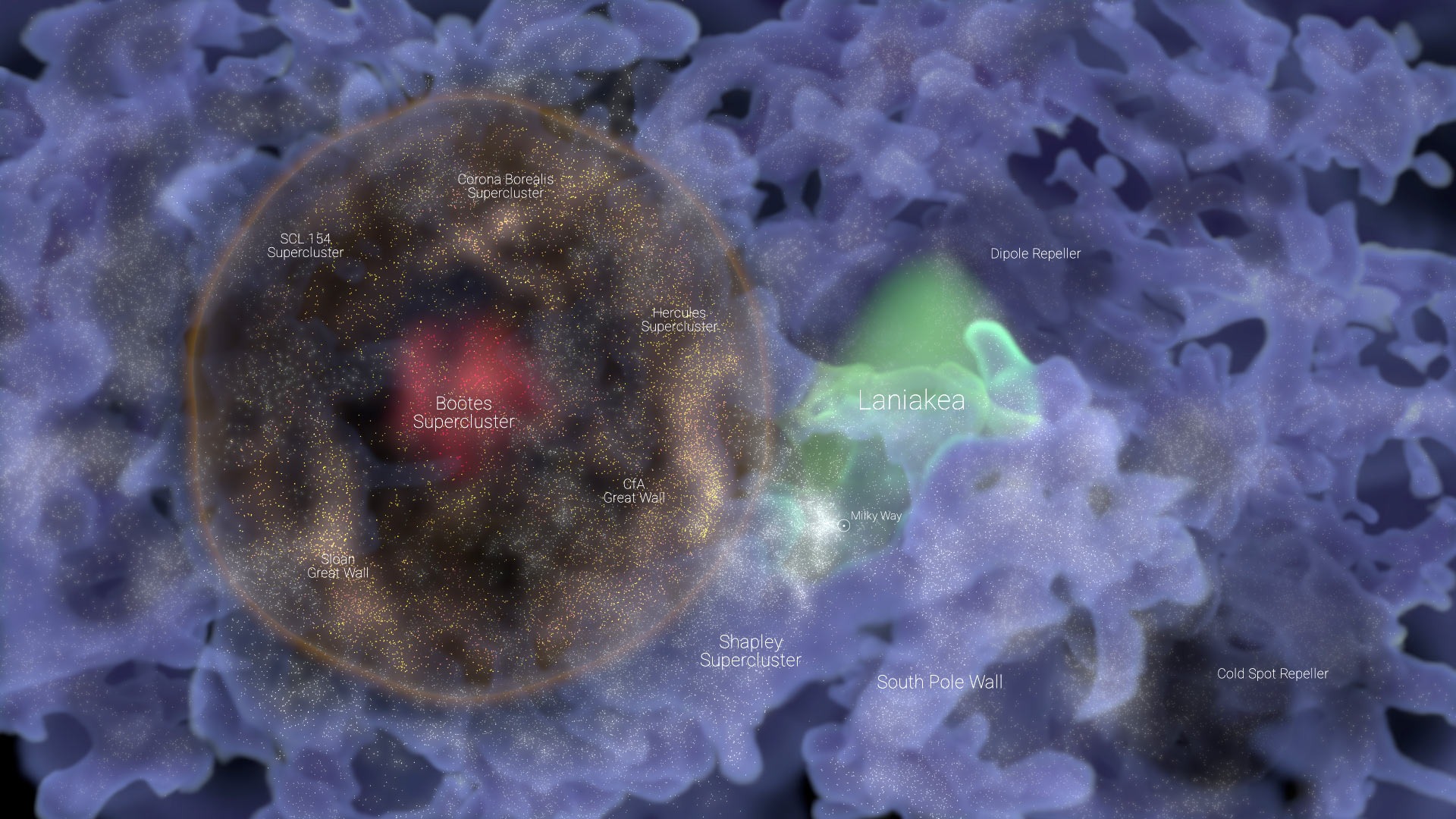In the cold depths of space, not far from the Milky Way, astronomers have discovered a cluster of galaxies in the form of an impressive giant bubble. This discovery may provide answers to the question of the birth of the Universe, because astronomers believe that it may be a relic of the early Universe.

This cluster was named Ho’oleilana. Its features indicate the presence of baryon acoustic vibrations (LHC) — traces of acoustic waves that traveled through space in ancient times of the Universe before freezing in place. Baryonic acoustic vibrations can be found throughout space, but Ho’oleilana, located “only” 820 million light-years away from us, has amazed astronomers with its incredible size.
Astronomer Brent Tully from the University of Hawaii notes: “We accidentally stumbled upon this cluster. It is so large that it covers the entire sector of the sky that we studied. Its size of one billion light-years exceeds our theoretical expectations. If our understanding of the formation and evolution of this structure is correct, then the Big Bang was closer to us than we assumed, which indicates a much higher rate of expansion of the Universe”.
Accurate measurements
Scientists have made a discovery based on the Cosmicflows-4 catalog, which includes distances up to 55,877 galaxies located in a particular sector of the sky. To achieve maximum measurement accuracy, they used eight different techniques. Only after that, when it is known how far the galaxies are located, it becomes possible to establish patterns of their density and location.
The result of these observations was an interesting picture: a large ring, about 1 billion light-years in diameter, with galaxies that are more densely grouped in the center. This structure is noted as a consequence of baryonic acoustic vibrations.
Physics of the Early Universe
In the early period of history, the Universe was filled with hot and dense plasma that behaved like a liquid. The internal gravitational attraction conflicted with the external radiation pressure, which created spherical acoustic waves penetrating the plasma. Over time, the Universe cooled down, and free-moving particles were able to assemble into atoms about 380 thousand years after the Big Bang. The external acoustic vibrations stopped and became areas of increased density of matter with a radius of about 150 megaparsecs (490 million light-years).
In fact, these are spherical structures that are perceived as rings through perspective. These structures are of great importance for science. They can be used to measure cosmic distances, since their sizes are known precisely, and to study the expansion of the Universe. But their detection is possible only when we understand how galaxies unite in their clusters.
Cosmographer Daniel Pomarede of CEA Paris-Saclay University in France. notes: “I am the cartographer of the group, and mapping Hoʻoleilana in three dimensions helps us understand its content and relationship with its surroundings. It was an amazing process to construct this map and see how the giant shell structure of Hoʻoleilana is composed of elements that were identified in the past as being themselves some of the largest structures of the universe.”
An important part of Ho’oleilana are such structures as the Boötes Void, a spherical sparse region of galaxies with a diameter of 400 million light–years, the Coma Great Wall and the Sloan Great Wall, which consist of parts of the shell, as well as the Boötes Supercluster, which is almost absent in the center of the bubble.
Given that the size of this bubble is larger than expected, the discovery of Ho’oleilana may indicate that the Universe is expanding faster than we thought. Typically, estimates of the expansion rate range from 67 to 74 km/s per megaparsec. Ho’oleilana shows a value of 76.9 km/s per megaparsec.
The researchers note that further observations and analysis are required to solve this fascinating puzzle.
According to cea.fr
Follow us on Twitter to get the most interesting space news in time
https://twitter.com/ust_magazine
